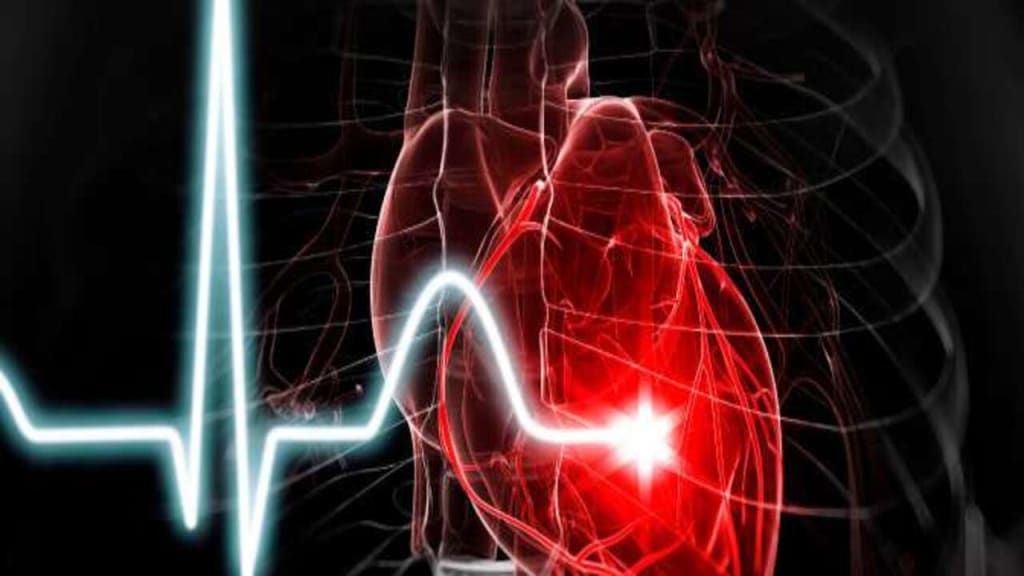Heart Disease and Stroke
Understanding the Leading Causes of Death

Understanding the Leading Causes of Death: Heart Disease and Stroke
Heart disease and stroke are two medical disorders that are intimately connected to one another and are still major global public health problems. Each year, they contribute significantly to world mortality rates by killing millions of people. In this post, we will dig into the complexities of heart disease and stroke, looking at their origins, risk factors, and methods of prevention. We may take proactive measures to lessen their influence on our lives and enhance general cardiovascular health by better understanding these disorders.
1. Heart disease and stroke's global toll
The two biggest causes of mortality worldwide are heart disease and stroke. The World Health Organisation (WHO) estimates that cardiovascular illnesses, which include heart disease and stroke, claim 17.9 million lives annually. This is a serious public health concern since these illnesses impact people of all ages, genders, and socioeconomic statuses.
2. Information about heart disease
A variety of illnesses that affect the anatomy and operation of the heart are referred to as heart diseases. Coronary artery disease, which is the most prevalent form, happens when the blood vessels supplying the heart narrow or obstruct, reducing blood flow. Angina, heart attacks, or heart failure may arise from this.
High blood pressure, high cholesterol, smoking, being obese, having diabetes, having a family history of the illness, and leading an unhealthy lifestyle are all risk factors for heart disease. The incidence of heart disease can be considerably decreased by addressing these risk factors through lifestyle changes such as regular exercise, a balanced diet, and quitting smoking.
3. Exploring Stroke
A stroke happens when the brain's blood supply is cut off, either because of a blockage (ischemic stroke) or a blood vessel rupture (hemorrhagic stroke). The lack of oxygen and nutrients causes the brain cells to quickly deteriorate. The effects of a stroke can be fatal, resulting in paralysis, speech difficulties, and even death.
The main risk factor for stroke is hypertension (high blood pressure). Smoking, being overweight, having high cholesterol, having diabetes, having atrial fibrillation (an abnormal heartbeat), leading a sedentary lifestyle, and having certain medical disorders are additional risk factors. Stroke risk can be considerably decreased through early identification and efficient management of certain risk factors.
4. Management and Prevention
A comprehensive strategy is necessary for heart disease and stroke prevention. Regular health exams, good weight management, a balanced diet, physical exercise, stress management, and abstaining from cigarettes and excessive alcohol intake are crucial measures in lowering the risk.
Additionally, regulating cholesterol levels, diabetes, and blood pressure is essential for avoiding cardiovascular illnesses. To properly manage these diseases, medications prescribed by medical specialists may be necessary.
5. Research and Initiatives in Public Health
In order to spread information about heart disease and stroke prevention, public health organisations, governments, and healthcare practitioners are essential. The goal of programmes like educational campaigns, community outreach initiatives, and screening activities is to arm people with the information and tools they need to make wise choices about their cardiovascular health.
The development of novel approaches for the early identification and prevention of heart disease and stroke is another area of current research that is being worked on. We can better understand these problems and create solutions that are more successful through ongoing research and collaborations.
Conclusion
Heart disease and stroke cause a considerable number of fatalities each year, posing serious problems for world health. However, we can lessen the effects of these disorders through better awareness, early identification, and proactive lifestyle alterations. We can work towards a future where heart disease and stroke are reduced and overall wellbeing is improved for everyone by adopting a holistic approach to cardiovascular health, both at an individual and social level.
About the Creator
imran khalil
In a world where words shape our perceptions, ignite our imaginations, and connect us across time and space, article writers play a crucial role in delivering informative and engaging content. Among these skilled communicators,





Comments
There are no comments for this story
Be the first to respond and start the conversation.